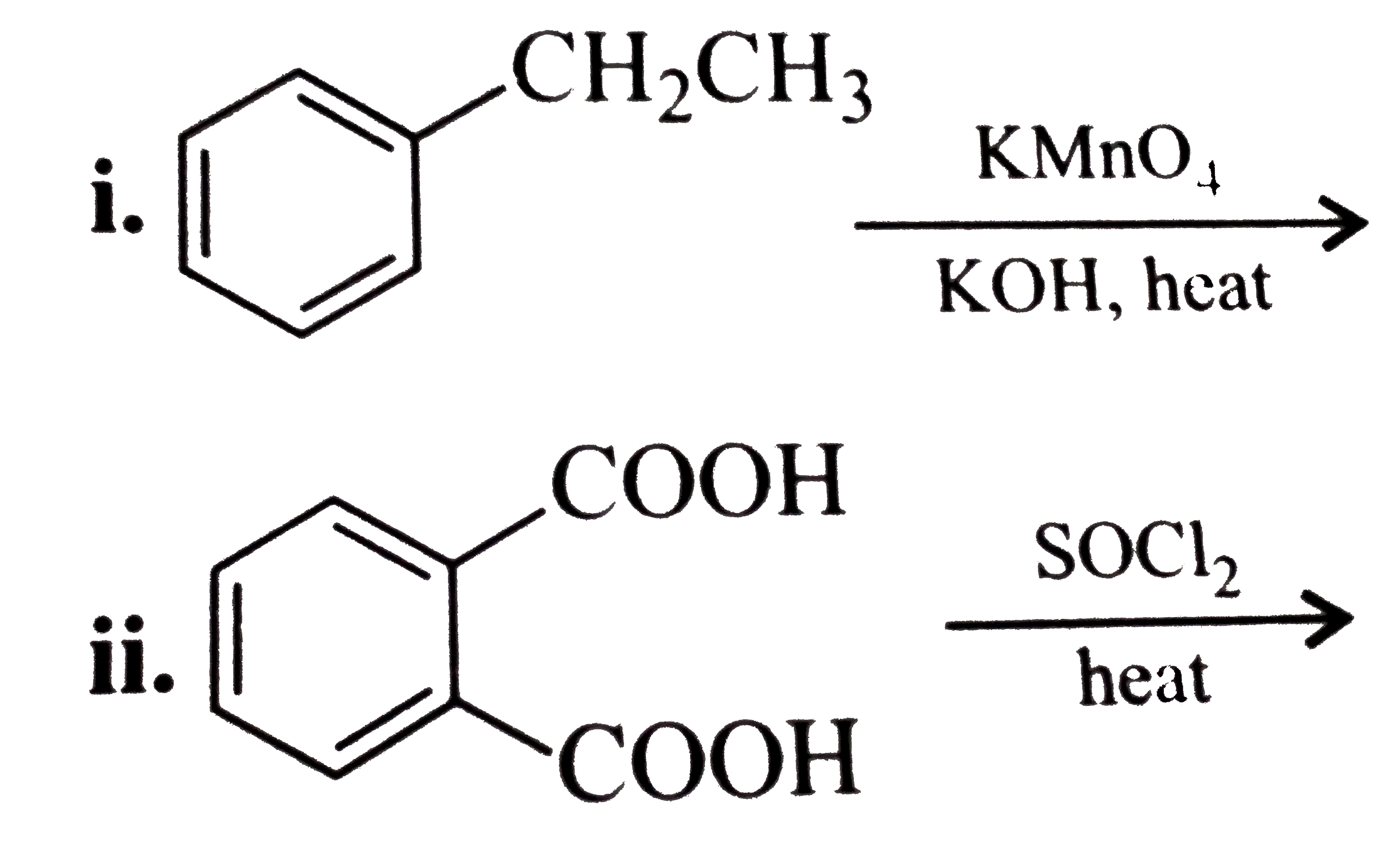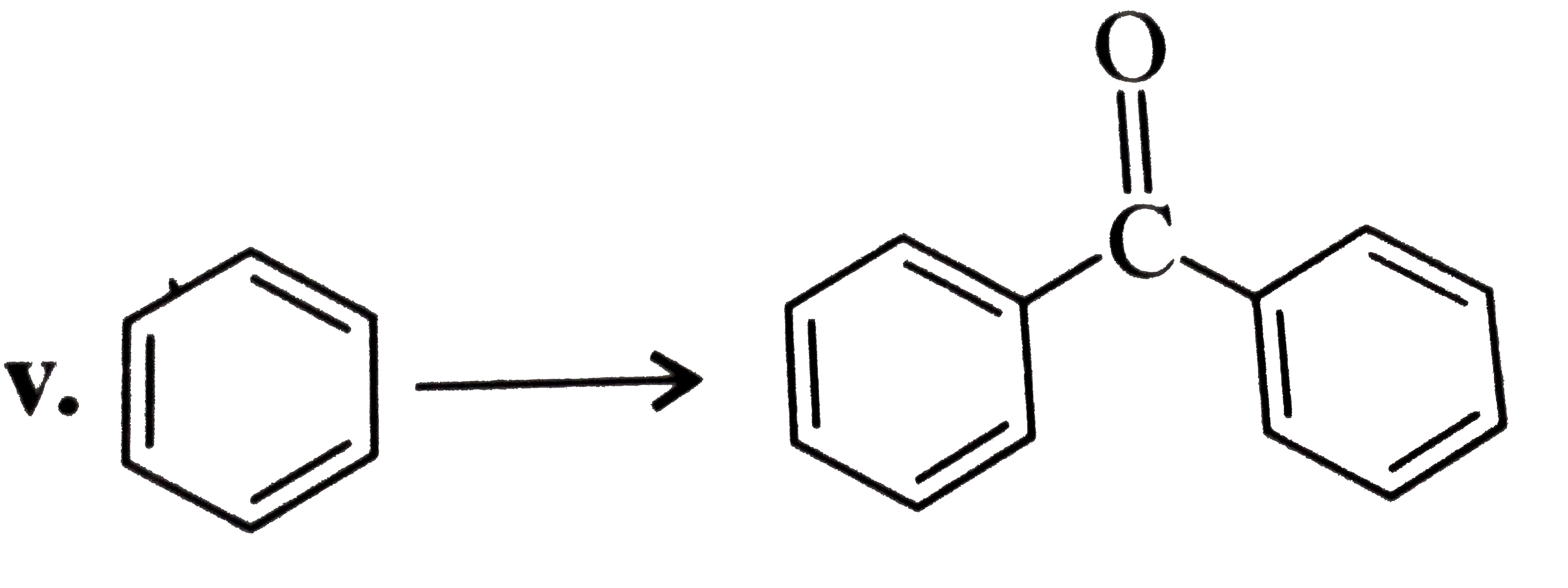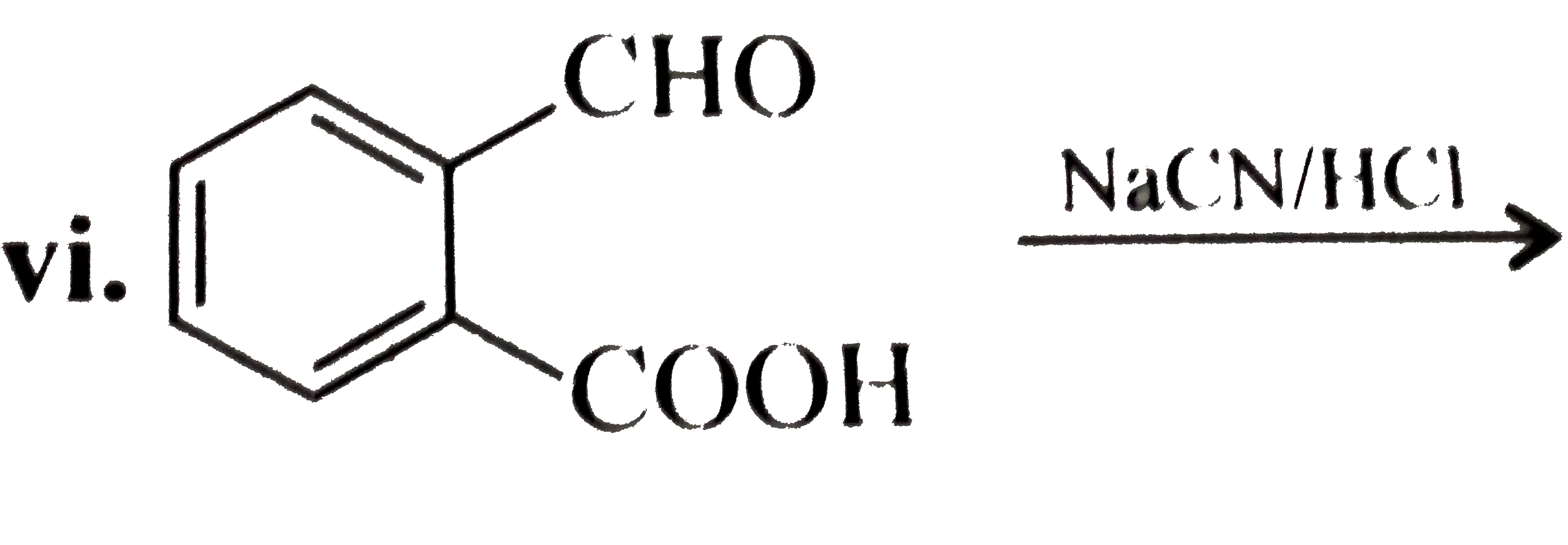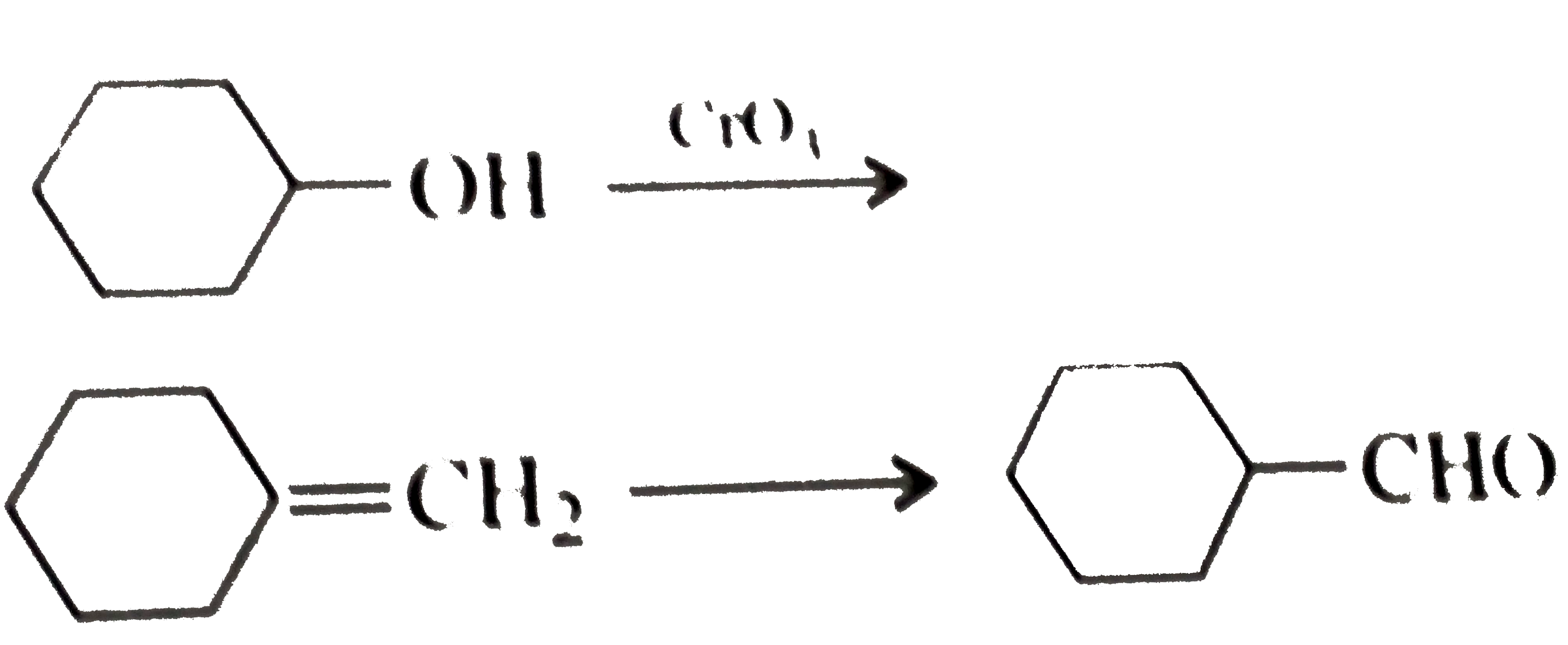To solve the reaction of benzaldehyde (C₆H₅CHO) with propanal (CH₃CH₂CHO) in the presence of dilute sodium hydroxide (NaOH), we will follow these steps:
1. Identify the Reactants:
- We have benzaldehyde (C₆H₅CHO) and propanal (CH₃CH₂CHO).
- Benzaldehyde does not have any alpha hydrogen (the hydrogen atom attached to the carbon adjacent to the carbonyl carbon).
- Propanal has alpha hydrogen atoms that can participate in the reaction.
Hint: Check the structure of both aldehydes to identify the presence of alpha hydrogens.
2. Formation of Enolate Ion:
- Since propanal has alpha hydrogens, when treated with dilute NaOH, one of the alpha hydrogens from propanal will be removed, forming an enolate ion.
- The enolate ion formed from propanal is CH₃CH(-)CHO.
Hint: Remember that the enolate ion is formed when a base abstracts an alpha hydrogen.
3. Nucleophilic Attack:
- The enolate ion (CH₃CH(-)CHO) will act as a nucleophile and attack the carbonyl carbon of benzaldehyde (C₆H₅CHO).
- This results in the formation of a tetrahedral intermediate.
Hint: The nucleophile attacks the electrophilic carbonyl carbon.
4. Formation of Aldol Product:
- The tetrahedral intermediate rearranges, and a hydroxyl group (-OH) is formed.
- The product at this stage is C₆H₅CH(OH)CH₂CHO.
Hint: The reaction involves the addition of the enolate to the carbonyl carbon, leading to a new carbon-carbon bond.
5. Dehydration to Form the Final Product:
- Upon heating, the aldol product undergoes dehydration (loss of water) to form an α,β-unsaturated carbonyl compound.
- The final product is C₆H₅CH=CHCHO (a conjugated system).
Hint: Dehydration typically occurs when the aldol product is heated, resulting in the formation of a double bond.
Final Product:
The final product of the reaction is C₆H₅CH=CHCHO, which is an α,β-unsaturated aldehyde.
Summary of Reaction:
Benzaldehyde + Propanal (in the presence of dilute NaOH) → C₆H₅CH=CHCHO (after aldol condensation and dehydration).
- We have benzaldehyde (C₆H₅CHO) and propanal (CH₃CH₂CHO).
- Benzaldehyde does not have any alpha hydrogen (the hydrogen atom attached to the carbon adjacent to the carbonyl carbon).
- Propanal has alpha hydrogen atoms that can participate in the reaction.
- Since propanal has alpha hydrogens, when treated with dilute NaOH, one of the alpha hydrogens from propanal will be removed, forming an enolate ion.
- The enolate ion formed from propanal is CH₃CH(-)CHO.
- The enolate ion (CH₃CH(-)CHO) will act as a nucleophile and attack the carbonyl carbon of benzaldehyde (C₆H₅CHO).
- This results in the formation of a tetrahedral intermediate.
- The tetrahedral intermediate rearranges, and a hydroxyl group (-OH) is formed.
- The product at this stage is C₆H₅CH(OH)CH₂CHO.
- Upon heating, the aldol product undergoes dehydration (loss of water) to form an α,β-unsaturated carbonyl compound.
- The final product is C₆H₅CH=CHCHO (a conjugated system).
The final product of the reaction is C₆H₅CH=CHCHO, which is an α,β-unsaturated aldehyde.
Benzaldehyde + Propanal (in the presence of dilute NaOH) → C₆H₅CH=CHCHO (after aldol condensation and dehydration).
Topper's Solved these Questions
- ALDEHYDES AND KETONES Book:DINESH PUBLICATIONChapter:ALDEHYDES AND KETONES Exercise:Completion Of The Missing Links
Explore 10 Videos
- ALDEHYDES AND KETONES Book:DINESH PUBLICATIONChapter:ALDEHYDES AND KETONES Exercise:Nomenclature and Isoerism
Explore 7 Videos
- ALDEHYDES AND KETONES Book:DINESH PUBLICATIONChapter:ALDEHYDES AND KETONES Exercise:Some Typical Conversions
Explore 30 Videos
- ALCOHOLS AND PHENOLSBook:DINESH PUBLICATIONChapter:ALCOHOLS AND PHENOLSExercise:Matrix
Explore 9 Videos
- ALKALI EARTH METALSBook:DINESH PUBLICATIONChapter:ALKALI EARTH METALSExercise:Unit test-12
Explore 5 Videos
Similar Questions
Complete each synthesis by giving the missing starting material, reagent, or products.
i.
ii.
iii. C6H5CHOH2NCONHNH2−−−−−−−−−→
iv.
v.
vi.
vii. C6H5CHO+CH3CH2CHODil.NaOH−−−−−−→
viii. CH3COCH2COOC2H5(i)NaBH4−−−−−−→(ii)H+
ix.
x.
xi.
View SolutionComplete each synthesis by filling the missing starting materials, reagents or products (X,Y)
(i) C6H5CHO+CH3CH2CHONaOH−−−→X
(ii) CH3CH2CH2CH2OHY−−→CH2CH2CH2COOH
View Solution
Knowledge Check
The reaction
C6H5CHO+CH3CHOdil.NaOH−−−−−→
C6H5CH = CHCHO is calledABenzoin condensationBClaisen condensationCPerkin reactionDCannizzaro's reactionCH3CHO+CH3CH2CHOdil.NaOH−−−−−→
The number of product (s) in the above reaction is ( are) ( excluding stereoisomers )A1B2C3D4In the reaction
C6H5CHO+(CH3CO)2OCH3COONa−−−−−−−→A. Product A isAacetaldehydeBcinnamic acidCβ− naphtholDphenol
Explain why aldol condensation of aldehydes with methyl alkyl ketones involves the methyl group in the presence of basic catalyst but attack at the methylene group in the presence of acid catalysts e.g.
C6H5−CHO+CH3−CO−CH2−CH3NaOH−−−→H2OC6H5CH−CH−CO−C2H5
C6H5−CHO+CH3CO−CH2−CH3H2SO4−−−−−−−→3CH3COOHC6H5−CH=C∣CH3−CO−CH3
View SolutionIn the given reaction sequence
C6H5CHO+CH3−NO2(i)NaOH(ii)Δ−−−−−−−−−−→[X]
[X] will be
View SolutionC6H5−CH=CH−CHO is
View SolutionThe major products formed in the reaction
C6H5CHO+CH3NO2NaOH−−−→Heat(X)
View SolutionWhich of the following are examples of aldol condensation ?
1.2CH3CHOdil.NaOH−−−−−→CH3CHOHCH2CHO . 2CH3COCH3dil.NaOH−−−−−→CH3COCH(CH3)CH2COCH3
3. 2HCHOdil.NaOH−−−−−→CH3OH+HCOOH
4. C6H5CHO+HCHOdil.NaOH−−−−−→C6H5CH2OH
View Solution

